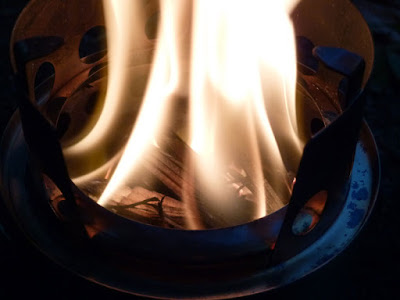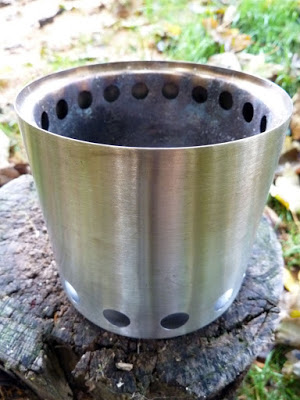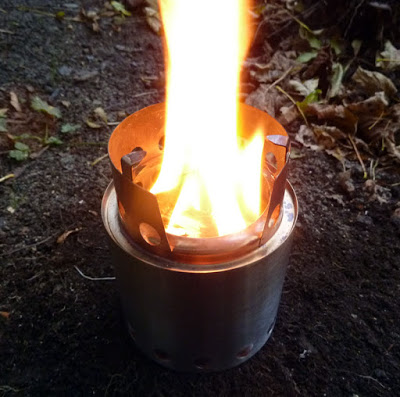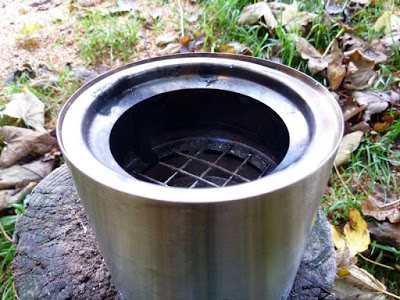Wood, why wood? In my opinion, the main appeal of using wood as a fuel, is its abundance. There’s lots of it just laid around the countryside waiting to be picked up and put to good use. Any other type of stove requires you to firstly spend money buying something to burn and secondly, you’ll need to carry that something with you … potentially, wood means free fuel and less to carry.
It’s not entirely without its drawbacks though – and for the well presented, modern day bikepacker, the main downside to wood is sooty pans. I know that sounds like a trivial issue but the soot from a pot can soon get transferred to you, who will more than likely transfer that soot directly to a £200 sleeping bag or £100 jacket … which probably isn’t something you want.

Wood produces soot because it’s inefficient, when it burns it doesn’t burn fully and the soot is the legacy it leaves behind. If you can somehow increase the efficiency, then you should also reduce the amount of soot left on your cookware, hands, sleeping bag, etc. One way to do this is by using what generally gets termed as a ‘wood gas stove’ … I put a post up a while ago which explains a little more about the concept and details how to make one. However, for those who can’t be bothered to click the link, the thinking goes something like this – when wood burns it produces gas. Some of this gas is flammable but it usually doesn’t ignite because there isn’t enough air available to support combustion. If we could somehow mix additional air with this gas, then it will ignite, which means a more efficient burn, greater heat output, lowered fuel consumption and less soot … and that, is what the SOLO stove promises.
 |
| Air in the bottom and out the top. |
The stove’s made entirely from stainless steel. It comes in two parts, which consist of the main stove body and the detachable pot support … which fits inside the stove for safe keeping when packed. The air intake holes around the outside of the base feed air to both the base of the fire and also to the air holes around the top of the inner wall. It’s the air coming in through these top holes that mixes with the unburnt gases and helps promote a more complete burn.
 |
| Just add pan. |
Packed, the stove measures 98mm high x 108mm in diameter and in its stuff sack tips the scales at 255g. That’s not particularly small or light but neither is it big or heavy, especially when you consider that there’s no additional fuel to carry, something which will no doubt become more beneficial on longer trips.
 |
| Pot support flipped upside down stores inside the main stove body. |
I’ve dabbled with a variety of wood stoves in the past and they’ve all enabled me to cook and brew up even if the weather’s been unkind but they do take a little work. It’s not instant, you can’t just turn a knob and press a button, there’s a certain amount of effort involved but as with most things in life … the effort can make the process all the more satisfying.
I’ll return in a few weeks to let you know how we’ve got on.
Full review HERE





Am keen to find out how you get on. Looks great